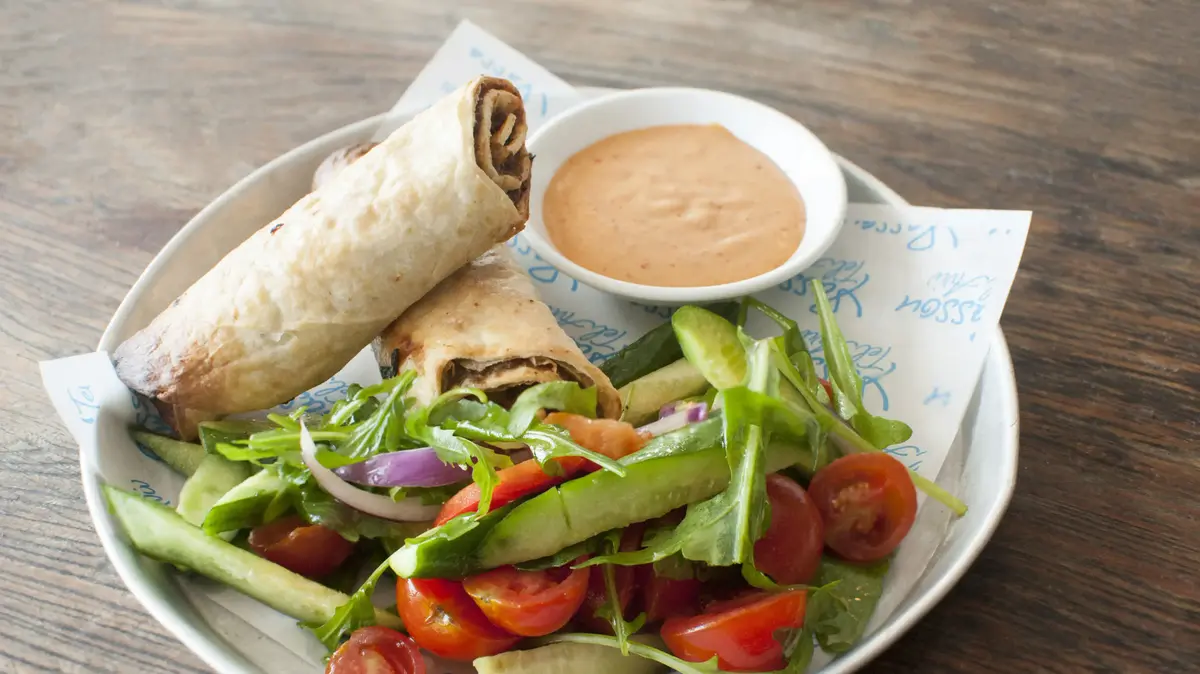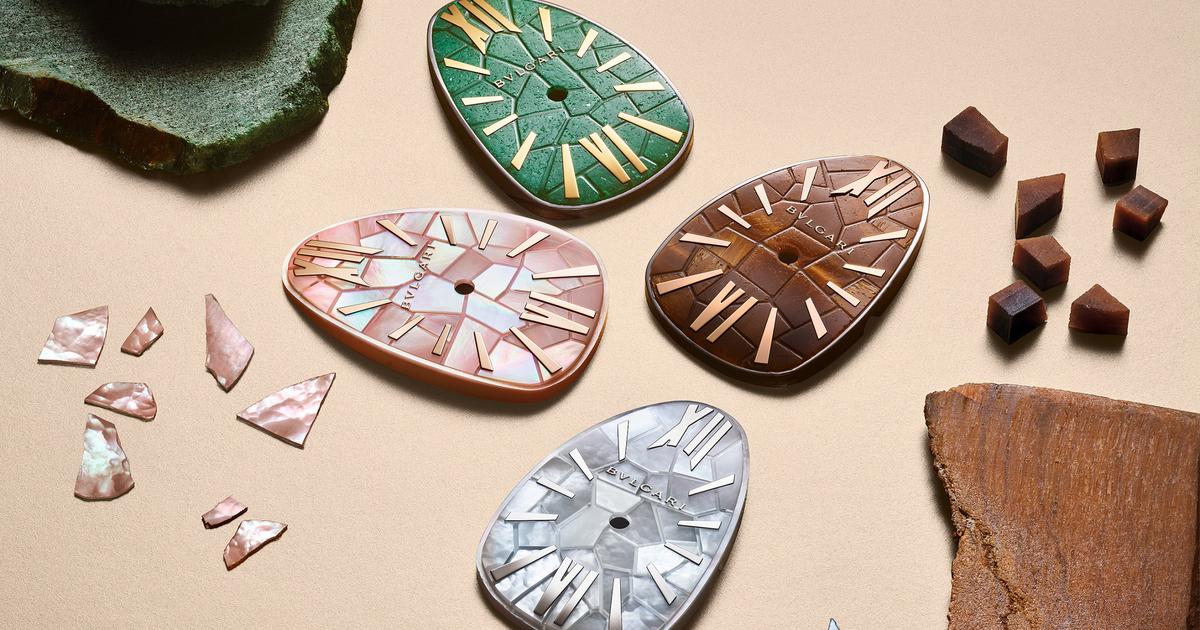Enlarge image
On Candlemas, "La Chandeleur" is celebrated throughout France - on this day crêpes are traditionally eaten
Photo: Oleksandr Prokopenko / IMAGO / PantherMedia
"Is the butter going to explode again?" There is excitement in our four-year-old daughter's voice, maybe even anticipation.
But no one can blame her for asking this, because we actually regularly have a bang in the microwave, although of course we should know how to do it differently.
At least we cover the bowl with the butter now, then at least the mess is limited.
The reason we regularly melt butter in the microwave is because of a recipe I found on a google search.
I was convinced of its quality even before trying it, because it was published in the traditional French newspaper »Le Monde«: a recipe for
crêpes
.
A recipe that always makes everyone happy and therefore deserves its prominent place on the extractor hood.
You take:
1 egg
1 tablespoon of sugar
60 grams of flour
125 ml milk
1 tbsp melted butter
Mix all the ingredients with the whisk, done.
In the original recipe, a tablespoon of rum is added, but we leave that out.
According to »Le Monde«, this mixture should yield four crêpes.
But "Le Monde" naturally assumes that its readers have a "poêle à crêpes" at home, a crêpes pan.
Do you need something like that?
And which one do you take?
We tried to find out with this test.
We tested these devices
Rosenstein & Söhne crêpe maker
WMF Lono Creperie
Rösle Silence Pro crepes pan
Stoneline crepe pan
Tefal crepe pan
This is how we tested
The test pans and devices are cleaned and prepared for the first use according to the instructions for use.
The dough is prepared according to the above recipe.
The decisive factor for us is: How thin can we make the crêpes?
And how easy are they to turn?
Rosenstein & Söhne crêpe maker
It smokes and stinks.
The instructions for use warned of this: »Slight smoke and odors may develop during the first use.
This does not affect the safety of the product.
However, since this will affect the flavor of the crepe, you should not eat that first crepe.”
It doesn't sound very trustworthy, but with this device you have to assume that the first crêpes "fall" anyway, as my grandmother used to say, because the handling takes some getting used to.
Instead of distributing the batter in the pan as usual, the hot plate is dipped upside down into the batter.
A matching plastic bowl is included.
The heating plate is slightly curved upwards, the dough sticks to it when it is immersed.
To bake, turn the device over again and place it on the supplied charging station.
That sounds complicated and actually requires some practice: If the hot plate stays in the bowl with the dough just a little too long, it will produce an inedible dumpling.
If it's not pressed deep enough into the batter, the crepes will be tiny or have a hole in the middle.
If it is pressed in too hard, the batter will run over the edge of the heating plate and the crêpe will be difficult to remove after baking.
more on the subject
Pans put to the test: What cooks best – cast iron, Teflon or ceramic? By Peter Wagner
Food for the nerves: Galettes Bretonnes are served at the weekend
With a little practice, however, I manage to produce it surprisingly well – and in record time.
The device heats up in less than a minute and the baking time is only 30 seconds, as promised by the manufacturer.
However, only one side is then baked.
Turning the crêpes is not intended for this device.
I try anyway, which is a real challenge because the crepes are incredibly thin.
A throw turn will not work due to the design of the plate.
I finally achieve the best results with coated grill tongs, with which the individual crêpes can be carefully removed from the plate and, if you like, baked briefly on the other side.
According to »Le Monde«, the amount of batter in our recipe should make four crêpes.
With this device, there are 16 (!) pieces with a diameter of 17 to 20 centimeters each, each weighing around 16 grams.
The individual crêpes are so wafer-thin that they can be rolled up and fit onto a fork.
One crepe, one bite - my partner doesn't like the concept.
I'm less bothered by the »snack« feeling than the base station.
I don't want another electrical appliance lying around in the kitchen.
Our four-year-old daughter, on the other hand, is enthusiastic about the crêpe maker: she thinks it's great to dip the device into the batter.
And in fact, she can even cheer the sugar-free apple sauce on in this way - with a minimal amount of dough.
The most important things in brief:
20 cm in diameter, its own 800 watt charging station, the matching plastic bowl is included, as is a plastic spatula.
Top:
It takes less than two minutes from switching on the device to the first finished crêpe.
The crepes will be paper thin.
Flop:
Unusual handling that requires practice.
The heating plate cannot be removed, dough residues under the edge are difficult to remove.
WMF Lono Creperie
This appliance looks very professional, just like the hot plates used to make crepes at street stalls in Paris and at German Christmas markets and fairgrounds.
The temperature is continuously adjustable.
On the edge, the plate has a small overflow protection for the dough, which should prove to be very practical.
There is also a batter spreader and a 46 centimeter long silicone crêpes turner.
Before using the plate for the first time, “rub it with a few drops of oil using a kitchen towel” and then heat it up for ten minutes at the highest level.
Unlike the crepe maker from Rosenstein & Söhne, nothing smokes or stinks here.
However, the first crêpe is not very attractive with this device either: the highest level is clearly too hot.
In addition, it is not so easy to dose the amount of dough so that the entire plate is evenly and thinly covered.
Handling the dough spreader also needs to be practiced.
Turning it over is easy thanks to the included turner: the crêpe is wonderfully easy to remove and easily turned to the other side.
This time, the amount of batter from our recipe results in three crêpes with a diameter of 33 centimeters and a weight of around 65 grams. We are satisfied with the result, but see potential for making the crêpes thinner and more shapely, so we double the batter again on.
The result: We are making visible progress!
And preparing it is great fun.
The most important things in brief:
33 cm diameter, 1600 watts, temperature can be adjusted variably
Top:
Gives the feeling of standing at a crêpes stand yourself.
Comes with batter spreader and crepes spatula.
Very easy to clean.
Flop:
Needs a lot of storage space in the kitchen.
Tefal Excellence crepe pan
The first impression is very positive.
The pan feels good in the hand and the rim is nicely slanted - a perfect launch pad for turning in the air.
According to the manufacturer, the non-stick titanium coating should even forgive scratching with a fork.
However, the small print in the instructions for use states that the two-year guarantee does not apply to scratches.
Of course we don't want it to get that far.
As recommended by the manufacturer, I rub the pan evenly with fat before using it for the first time.
Also here: no smoke, no stench.
I watch with excitement as the red dot in the middle of the pan slowly darkens and the hourglass shown there disappears.
Tefal calls this “thermo signal technology”: the pan should indicate when it has reached the optimum starting temperature by changing its colour.
A nice but dispensable gimmick, in my opinion: My hand held over the pan is an equally reliable indicator.
After around two and a half minutes, the pan is ready for use.
The batter can be easily distributed by swirling it around, but we achieve the best results with the WMF batter spreader that was supplied with the Lono crêperie.
The crêpe can be easily loosened with a spatula, and the first assessment was not deceptive: turning in the air works wonderfully!
This is an advantage that should not be underestimated, especially at the beginning of the year: Every year on February 2nd, "La Chandeleur" is celebrated in France.
According to legend, anyone who manages to turn a crêpe properly in the air with a piece of gold in their left hand and a pan in their right hand is said to be lucky all year round.
And the pan collects plus points in another respect: This time the amount of batter actually makes four crêpes, each around 25 centimeters in diameter and around 40 grams in weight.
The most important things in brief:
25 cm diameter, 830 grams, 2 cm high rim, 18 cm long handle
Top:
Lies well in the hand, crêpes can be turned very easily in the air.
Flop:
There is nothing to complain about here.
Stoneline crepe pan
The rim of this pan is significantly steeper than the rim of the previously tested Tefal pan.
But it also lies well in the hand and even has a wooden dough spreader with it.
According to the manufacturer, the pan is made from recycled aluminum and coated with stone particles.
The instructions for use read rather intimidating: "Before using the cookware for the first time, check for possible material residues, especially on the bottom of the cookware," it says, and "Boil this item 2-3 times".
Hardly on the stovetop, the pan starts to stink.
I turn the temperature up and pour in tap water, once, twice, three times - a fatal mistake.
When the stench finally goes away, the bottom of the pan is deformed.
She wobbles on the stove like I do on my balance board.
I pick up the instructions for use again and read that you should "not quench the pan with cold water."
Was my water too cold?
The pan too hot?
Anyway, it's too late now.
I pour in a spoonful of batter and try to spread it properly in a circle with the batter spreader, but the tool is way too big relative to the pan.
You can't turn the distributor in circles without having to keep repositioning it.
It is the same size as the WMF dough spreader, but the WMF plate is eight centimeters larger in diameter.
Baking then succeeds surprisingly evenly despite the deformed bottom of the pan, and turning in the air works despite the rather steep edge.
The most important things in brief:
25 cm diameter, 640 grams, 2 cm high rim, 17 cm long handle
Top:
Very light, crêpes are easy to throw up.
Flop:
Stinks very badly the first time you use it.
The bottom of the pan has deformed.
Silence Pro crêpes pan by Rösle
The first thing that strikes you about this pan is the weight.
At around 1500 grams, it weighs around twice as much as the other test pans.
But it is also made of stainless steel, has an “encapsulated sandwich base with an aluminum core” and a “robust non-stick coating”.
The handle is covered with a silicone sleeve, which feels good in the hand.
Nevertheless, one can guess that throwing up the crêpes with this pan will be difficult.
It's amazing how quickly the Silence Pro gets hot.
After around 40 seconds it is ready to go.
It is also positive that nothing stinks and smokes here the first time you use it.
Spreading the dough works very well just by swivelling, but here too the result is clearly better with the dough spreader.
As with the other pans, the crepes release very easily, but in the throwing test, I found it difficult to complete turns and only when I held the handle with both hands.
My partner does it better, but unlike the Tefal pan, our chances of success are less than 50 percent.
The most important things in brief:
28 cm diameter, 1500 grams, 3 cm high rim, 23 cm long handle
Top:
Gets hot very quickly.
Flop:
Very hard.
Throwing the crêpes up becomes a feat of strength.
Conclusion
With all tested devices and pans we were able to bake delicious, thin crêpes without the addition of butter or oil.
My personal favorite is the Lono Creperie from WMF.
It aroused my ambition to bake crêpes that are not only perfect in terms of taste but also in terms of appearance, and shakes my principle of not cluttering the kitchen with unnecessary electrical appliances.
My partner, on the other hand, prefers the heavy Rösle Silence Pro crêpes pan.
He thinks it's ideal for frying steaks, fried eggs or fried potatoes.
Our daughter, on the other hand, loves the crepe maker from Rosenstein & Söhne.
But we will probably still buy the Tefal pan.
It takes up little space, can be used in a variety of ways - and thanks to its excellent casting properties, it ensures good luck for the whole year.
Background: Product tests in the Tests department
Open areaWhich products are reported on?
We decide for ourselves which products we report on in the test department and which we test or not. We do not receive any money or other consideration from the manufacturers for any of the test reports.
It can happen for various reasons that we do not report on products even though we have corresponding test products.
Open areaWhere do the test products come from?
Test devices and review copies of games are usually made available to us by the manufacturer free of charge for a certain period of time, sometimes even before the official release.
This allows our test reports to appear in time or close to the release of the product.
We only test pre-release versions or devices from pre-series production in special cases.
As a rule, we wait until we can get test devices or game versions that are identical to the retail versions.
In some cases, if they are already available in stores or online, we purchase test devices at our own expense.
Expand areaCan the editors keep the products?
As a rule, test devices are returned to the manufacturers after the end of the test.
The exceptions are review copies of games and long-term loans: For example, we have game consoles and smartphones in the editorial office that we are allowed to use for a longer period of time before they are returned.
For example, we can report on software updates, new accessories and new games or make long-term judgments.
Such products and review copies are often collected at the end of a year, for example, and sold at a company flea market, with the proceeds being donated to charitable causes.
In some cases, review copies are donated directly to charitable organizations.
SectionWhat's up with the affiliate ads in some articles?expand
Articles in the testing department contain so-called affiliate ads that contain links to online shops.
If a user visits one of these shops via such a link and makes a purchase there, DER SPIEGEL receives a share of the sales in the form of a commission, but never the author individually.
The ads appear in articles regardless of whether a product test is positive or negative.
You can find a detailed explanation of affiliate links by clicking on this link.





/cloudfront-eu-central-1.images.arcpublishing.com/prisa/DWNMLKJJCJB7TBU7EWSPPPIT6Y.jpg)



